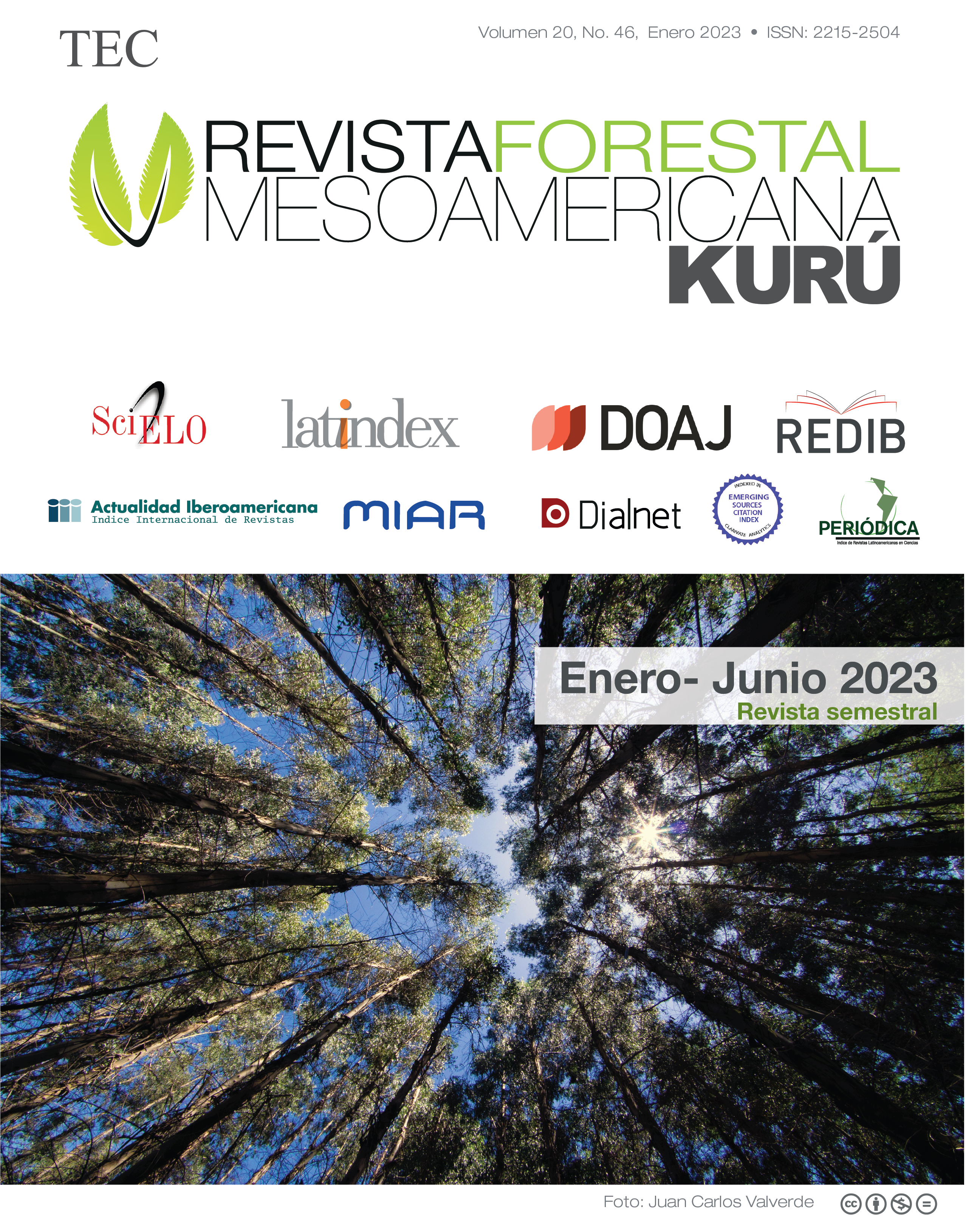Structure, composition and carbon storage in mangroves of Níspero and San Buenaventura-Colorado Wetlands, Gulf of Nicoya, Costa Rica
Main Article Content
Abstract
This study assessed the diversity, structure, composition, and carbon storage in a chronosequence of mangroves, in Níspero and San Buenaventura-Colorado Wetlands, Gulf of Nicoya, Costa Rica. Rhizophora mangle was the most important species in mangroves without impact in the past, while Laguncularia racemosa was the most important in age ranges from 1 to 10 years and from 11 to 20 years. Mean basal area in mangroves with no impact was 19,01 m2/ha, 0,35 m2/ha in mangroves from 1 to 10 years, and 0,16 m2/ha for mangroves from 11 to 20 years. Carbon stocks were higher in mangroves without impact in the past, and soil was the component with more carbon stored. The results from this study indicate that recovery of mangroves in these sites occurs differently in each one of them. Also, the time since impacted mangroves were abandoned does not determine their species composition, but the degradation levels of the sites after abandonment and land cover changes.
Article Details

This work is licensed under a Creative Commons Attribution-NonCommercial-NoDerivatives 4.0 International License.
Revista Forestal Mesoamericana Kurú is licensed under CC BY-NC-ND 4.0
Al enviar un artículo a la Revista Forestal Mesoamericana kurú (RFMK), los autores ceden los derechos patrimoniales a la editorial de la RFMK una vez su manuscrito haya sido aprobado para publicación, autorizando a la RFMK a editarlo, reproducirlo, distribuirlo, y publicarlo en formato físico y/o electrónico. La titularidad de los derechos morales sobre los trabajos objeto de esta cesión seguirá perteneciendo a los autores.

